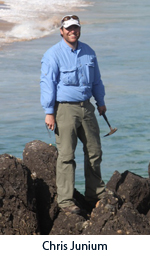Expert Available: 80th Anniversary of V-J Day
September 2, 1945, marks the formal surrender ceremony aboard the USS Missouri in Tokyo Bay—known as V-J Day—a pivotal moment that not only ended WWII but also shaped America’s role in the Pacific for generations to come. Retired Vice Admiral…

 Science Express provides rapid electronic publication of selected research papers that have recently been accepted for publication in Science, the premier journal of the American Association for the Advancement of Science.
Science Express provides rapid electronic publication of selected research papers that have recently been accepted for publication in Science, the premier journal of the American Association for the Advancement of Science.